What does it mean ?
year
18th-19th centurycurrent location
ATOPOS cvc, Athens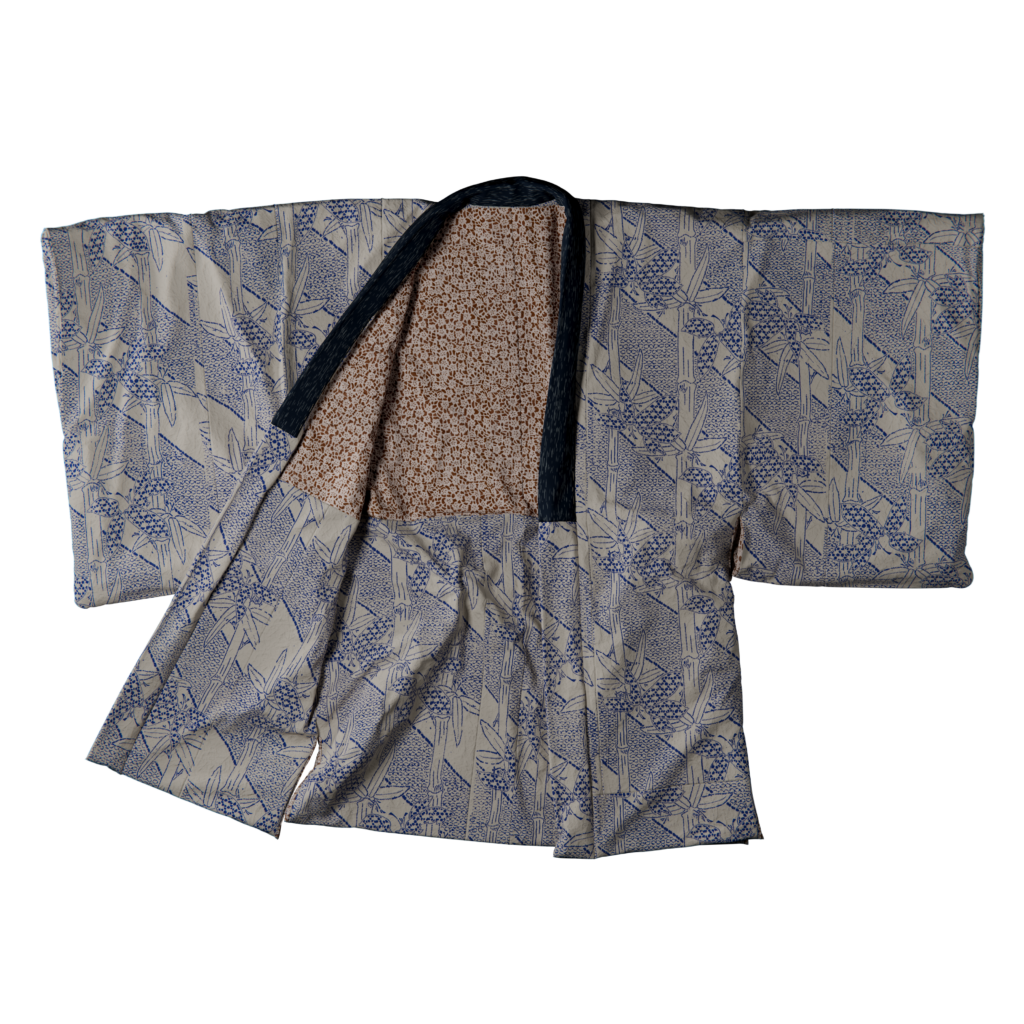
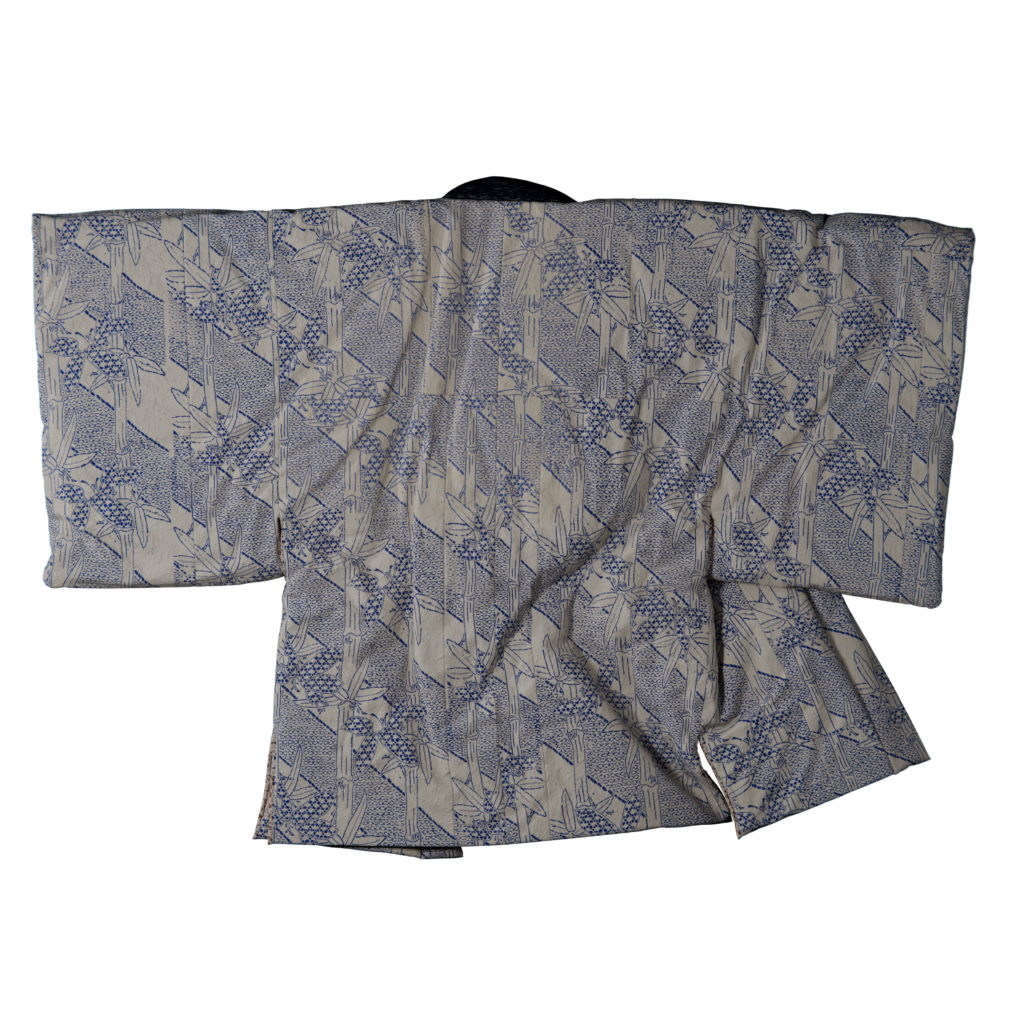

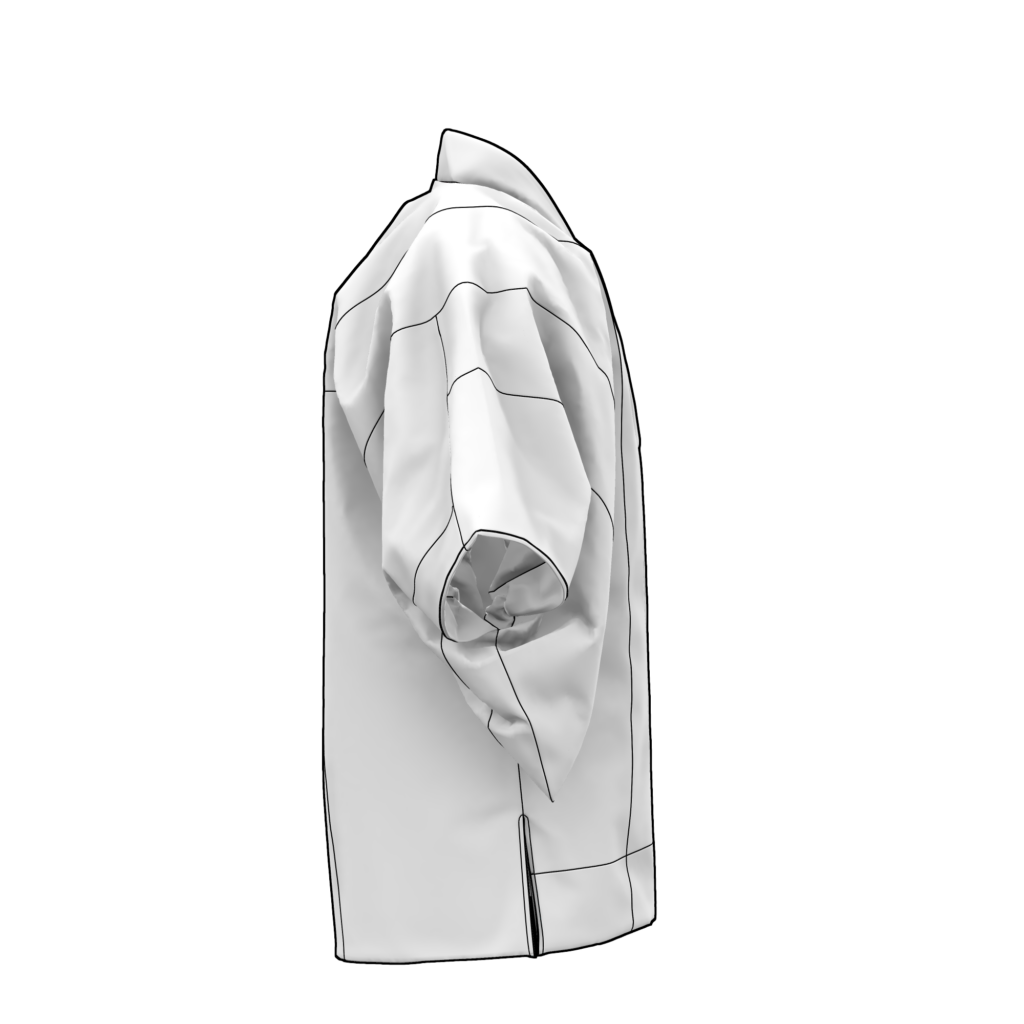

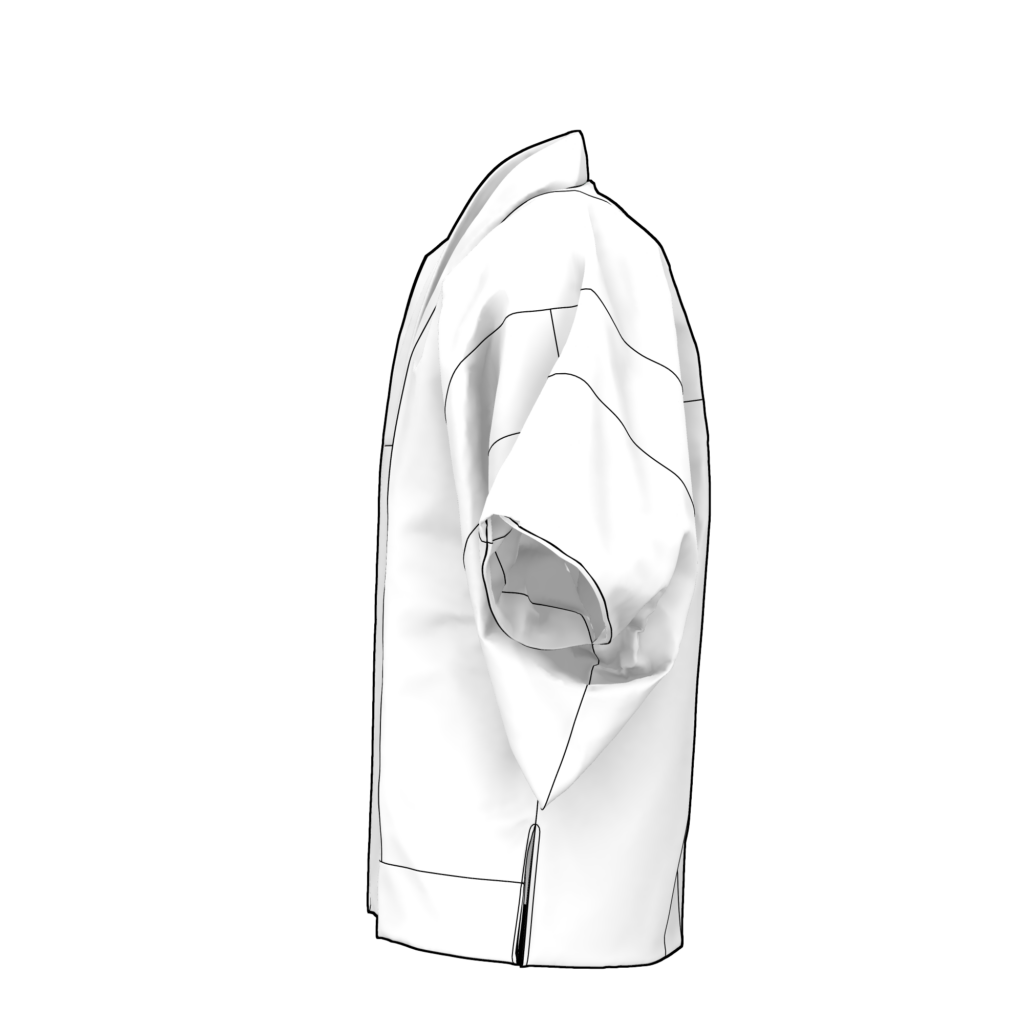
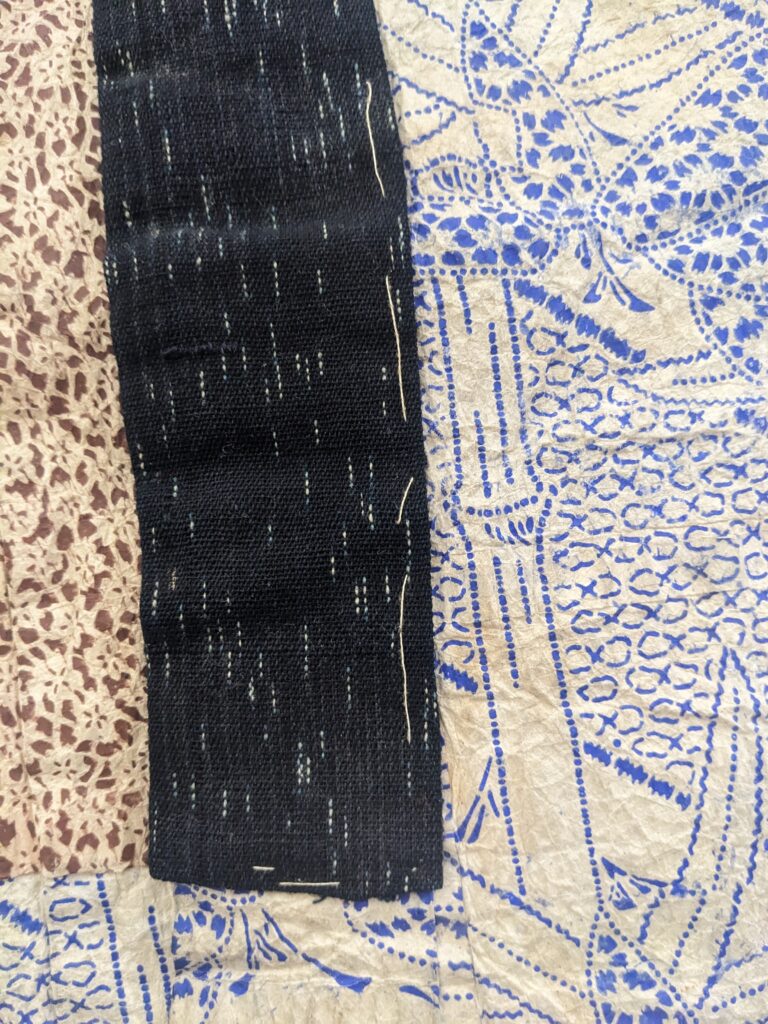
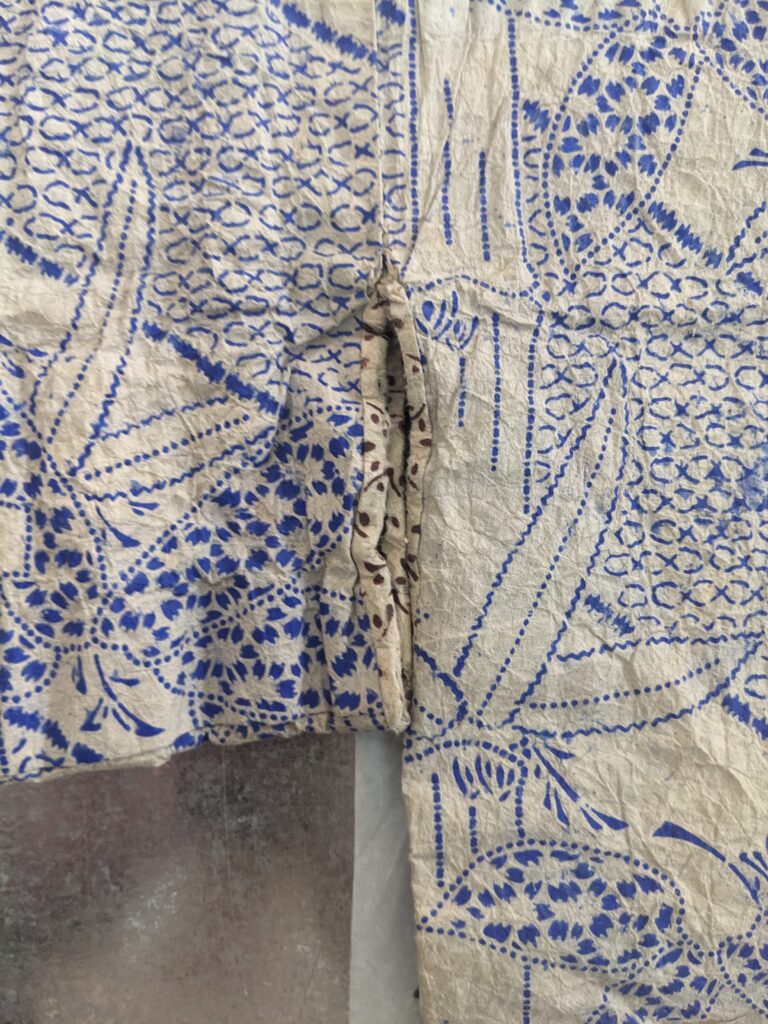
Bamboo Motif Hanten
What does it mean ?
year
18th-19th centurycurrent location
ATOPOS cvc, Athens[work in progress: finalising PDF pattern]
A padded hanten made of printed handmade washi paper. A hanten (袢纏) is a traditional Japanese short winter coat worn over kimono or casual clothing for warmth. It is a unisex garment with a history dating back to the Edo period (1603–1868). Hanten are typically made from thick, quilted cotton fabric and are characterized by a straight-cut body, wide sleeves, and a simple collar. This garment, which is a padded or wata-iri hanten, often has a padded interior for insulation, making it ideal for colder weather. The design of a hanten is similar to that of a haori, but it is more casual and functional. While a haori can be formal and part of ceremonial attire, a hanten is primarily worn over other clothes at home or in more relaxed settings. Traditionally, it was used by commoners as a practical, everyday garment, and it continues to be popular in modern Japan for its comfort and warmth in colder seasons.
This hanten features a woven collar, applied unevenly at the center front, a lining, padding, and is made of small sheets of paper that were printed before being pieced together to make a bolt of paper “cloth”. This cloth was then cut to make the hanten.
Hanten often feature simple, bold patterns or family crests, as does this example held in the collection at ATOPOS cvc. Three different printed papers have been used in the construction of this garment: The printed blue outer paper, the brown floral-printed paper facing the neck and lining the sleeves, and the printed paper used to bind the opening at the hem of the side seams and the armpit. The entire garment has been sewn by hand. It was purchased from Morita antiques, a well-established antique shop in the Aoyama neighborhood of Tokyo.
The sheets of paper composing the outer shell have been stenciled/printed in blue with floral bamboo and lily motifs and a striking right-slanting diagonal stripe composed of a grouping of abstract shapes. These sheets have been glued together, likely using a rice- or seaweed-based glue. Some glued seams have been printed, leading to the conclusion that single sheets were attached to form a roll of paper, which was then printed. In some areas, the patterns don’t match, though, so perhaps this garment was made of leftovers.
Some staining appears on the paper, but overall, the vibrancy of the blue pigment remains bright. The print, interestingly, seems to not have a top or bottom; it has no determined orientation, as one of the two rows of bamboo printed on each sheet grows according with gravity, and the other row is upside-down. This is a clever and useful way of designing a print as it means it can be used continuously in either direction, especially in the case of a kimono-style garment that has no shoulder seam and the fabric is used continuously from front, across the should, to the back. A single-orientation motif would appear upside-down on the back.
The entire garment is padded, likely with cotton or silk wadding.
Courtesy of ATOPOS cvc, Athens.
Research by Daphne Mohajer va Pesaran
Pattern making by Erisa Ibrahimi. 3D modelling by Martina Ponzoni. Texturing and rendering by Virgile Biosa.
